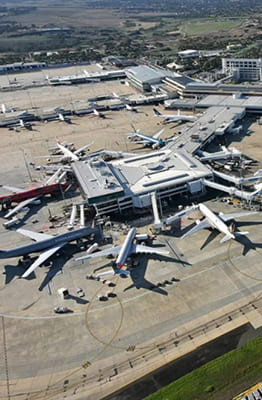Melbourne Airport is closing in on its pre-pandemic passenger numbers reaching 73% of comparable 2019 levels in May and climbing steadily.

Melbourne Airport handled over two million passengers in May – around three-quarters of May 2019 numbers. Passenger numbers were slightly down on April’s figures when a stellar Easter holiday period inflated numbers. However, the airport notes international airlines and passengers are returning, providing a more diverse mix of customers and a solid foundation for growth this year.
International passengers (and airlines) are returning to Melbourne
Melbourne Airport (MEL) saw 2,112,182 pass through in May. Of that number, 1,744,501 were domestic passengers, and 367,681 were international passengers. While that international traffic was a 13% increase on April 2022 figures, it was 57% short of the May 2019 figures. But the trend is in the right direction – in May 2021, just 52,103 international passengers moved through MEL.
“May is traditionally a quieter month for travel, particularly for leisure travelers, so it’s not surprising to see a slight decline in overall passenger numbers,” said Melbourne Airport CEO Lyall Strambi. “But the international growth we are seeing is really positive, and this demand is giving confidence to airlines to increase capacity.
“In May, we saw Emirates increase to double daily A380 services, Jetstar doubled its services to Bali, and Qantas resumed flights to Christchurch and Wellington. Early in June, United also resumed a three times weekly service between Melbourne and San Francisco.”

Direct city connecting rebooting for MEL but still shy of 2019 connectivity
Around two dozen international airports now have a direct route to Melbourne. In North America, aside from Mr Strambi’s mentioned United service to SFO, Qantas flies regularly to Los Angeles (LAX). In a westerly direction, Qatar Airways connects Melbourne to Doha (DOH), Etihad flies direct to Abu Dhabi (AUH), and Emirates scoots back and forth to Dubai (DXB).
Qantas started direct flights to Delhi (DEL) late last year – or rather, the flight from New Delhi is direct – the outbound service goes via Adelaide (ADL). Air India also links Melbourne and Delhi. Scoot, Singapore Airlines, and Qantas connect Melbourne and Singapore (SIN), while Malindo Air and Malaysia Airlines fly between Melbourne and Kuala Lumpur (KUL).

SriLankan is busy on the Melbourne – Colombo (CMB) route. In that neck of the woods, Jetstar flies between Melbourne and Phuket (HKT), and Thai is connecting Melbourne and Bangkok (BKK). Bamboo Airways has started flying between Melbourne and Ho Chi Minh (SGN) and Hanoi (HAN). China Airlines is coming into Melbourne from Taipei (TPI), and Philippine Airlines flies back and forth from Manila (MAN). Cathay Pacific maintains some flights between Hong Kong (HKG) and Melbourne. Japan Airlines is also connecting Tokyo (NRT) with Melbourne.
Business is reportedly booming on the Australia – Bali routes. Jetstar and Virgin Australia are doing well on the Melbourne – Denpasar (DPS) route. Around the Southwest Pacific, Jetstar is flying the Honolulu (HNL) – Melbourne route, Fiji Airways is jetting back and forth to Nadi (NAN), while Air Vanuatu is due to resume Melbourne – Port Vila (VLI) flights in July.
Air New Zealand, Jetstar, and Qantas are back flying between Melbourne and various New Zealand cities, including Auckland (AKL), Wellington (WLG), Christchurch (CHC), and Queenstown (ZQN).
International flights in and out of Melbourne and the range of destinations connect to the city still fall short of 2019 levels. However, as May’s passenger numbers suggest, airlines and passengers are steadily returning. Lyall Strambi thinks the numbers will keep trending upwards this year, and the recovery from the pandemic continues.
Source: Simple Flying

Warning: Illegal string offset 'cookies' in /home/u623323914/domains/eng.bayviet.com.vn/public_html/wp-includes/comment-template.php on line 2564